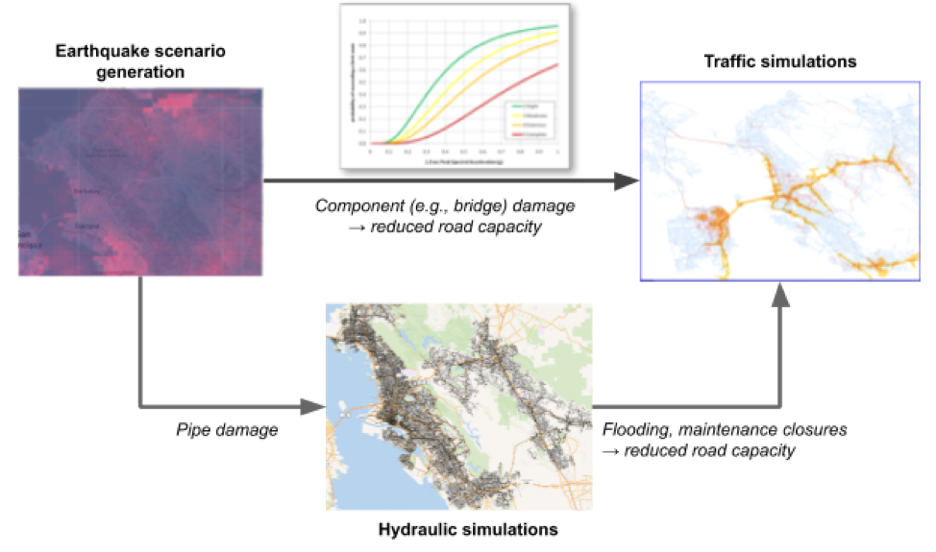The water pipeline is one of the “lifeline” infrastructures for cities. As water is indispensable for both citizens and industries in cities, understanding the hydraulic properties of fluid inside pipes is essential for us to understand the resilience of the city under natural or man-made hazards.
Our research focuses on developing a high-performance city-scale water-pipeline hydraulic simulator with the following functionalities:
- Quantify fluid characteristics (hydraulic head, fluid flow rate, etc. ) for given water pipe networks.
- Quantify leaking status for broken pipes.
- Ability to run large scale (million nodes-links) simulations
- Compatibility with other simulation tools
The hydraulic simulator can be used as a subsystem for earthquake resilience simulation of a multi-layered infrastructure system. See the figure below for details.
Figure 1. Framework of incorporating multi-layered infrastructure systems (water pipeline and road traffic) in simulating earthquake resilience of the San Francisco Bay Area cities. As earthquakes damage pipes, water flooding and pipe repair operations may cause potential traffic delays.
Importance of Isolation Valves for Water Distribution
Valves are important for isolating the effect of broken pipelines. A good valve topology can significantly reduce the overall risk of the entire system. As a result, it’s important to have a systematic and efficient methods to identify the location to install/ maintain the valves. Our research focuses on investigating the location priority to install the valves and understand the consequences of the failure of the valves.

